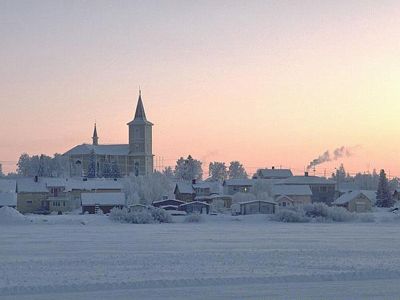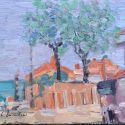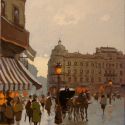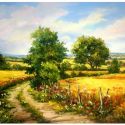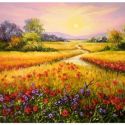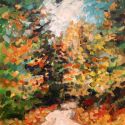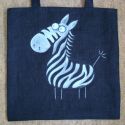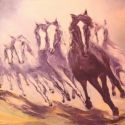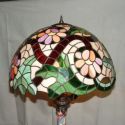Finland is a northern European country of four seasons for the discerning traveler, not a land of mass tourism. Summer season in Helsinki, winter at the skiing centers in Lapland and few happenings all year round temp enough people to make it a crowd, otherwise you can enjoy the space and silence in the pure northern nature. During the winter months you can have a skiing holiday or visit the Santa Claus and take a reindeer tour. Summer offers you a wide variety of activity from trekking to urban holidays, or you can simply relax at a hidden summer cottage with a sauna near a lake. Besides the mainland with vast forests and thousands of lakes separated by few agricultural and urban areas, the Baltic Sea with widespread archipelagos offers plenty of possibilities for sailing and fishing. Helsinki and few other places are worth of visiting throughout the year. Finland has a high standard of living, comparable to other Scandinavian countries, facilities are good and especially the telecommunications are next to none in the world.
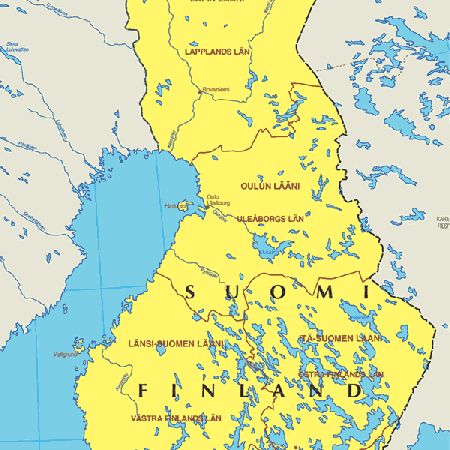
With an area of 338,000 square kilometers, Finland is the seventh largest country in Europe, located between Sweden and Russia. The Gulf of Finland separates southern Finland from Estonia and in the north Norway isolates Finland from the Barents Sea. Boreal forest cover two-thirds of Finland, one third of the country lies north of the Arctic Circle. Post-glacial lakes are a dominant feature, if marshes and bogs are also counted water covers about 10% of the country. Most of the country is relatively flat with few hills, the highest point of Finland, Halti in Lapland, rises 1328m above sea level. Finnish flora is rich and varied during the warm period between late May and September. The most common mammals in the forests include elks, foxes, lynxes, lemmings and hedgehogs, but also brown bear exists. Reindeer is a very common sight in the northern Finland, Lapland. There are over 300 species of birds including black grouse, whooper cranes and birds of prey, such as ospreys. With climate, Finland is more favored than most areas in the same latitudes, like Alaska.
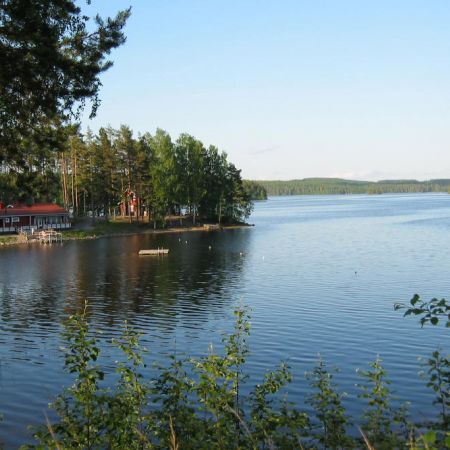
The summer months from July to August are generally warm, the midnight sun does its thing, but the nights can be chilly, and during the winter you should always take warm clothing with you.
LANGUAGE
Finnish language is different from the Indo-European languages; it belongs to the Finno-Ugric group of languages together with Estonian and Hungarian. Language is not much of a problem in Finland, however, because most Finns know some foreign language and many of them speak several. English is the most widespread foreign language and Swedish has the special status of being the country's second official language, German, French and Russian are not uncommon at the bigger towns and tourist centers. The five million Finns themselves may appear reserved at first, but they'll show the friendly face soon after first contact, especially if you show interest in the local culture like sauna.
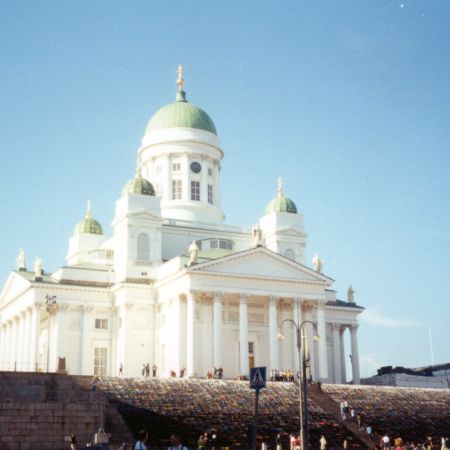
HISTORY
Finland lies at higher latitudes than any other country in the world and the punishing northern climate has complicated life there considerably. Geographically, Finland is on the remote northern periphery far from the mass of Europe yet near two larger states Sweden and Russia--later the Soviet Union which have drawn it into innumerable wars and have dominated its development.
At the beginning of its recorded history in the eleventh century A.D. Finland was conquered by its powerful neighbor Sweden. Christianization and more than 600 years of Swedish rule (c. 1150-1809) made the Finns an essentially West European people integrated into the religion culture economics and politics of European civilization. The Finns have however maintained their own language which is complex and is not related to most other European languages.
The centuries of Swedish rule witnessed Finland's increasing involvement in European politics particularly when the country served as a battleground between Sweden on the west and Russia on the east. Over the centuries Russia has exerted an especially persistent and powerful pressure on Finland. Many wars were fought between Swedes and Finns on the one side and Russians on the other. Eventually Russia conquered Finland and incorporated it into the Russian Empire where it remained for more than a century from 1809 to 1917.
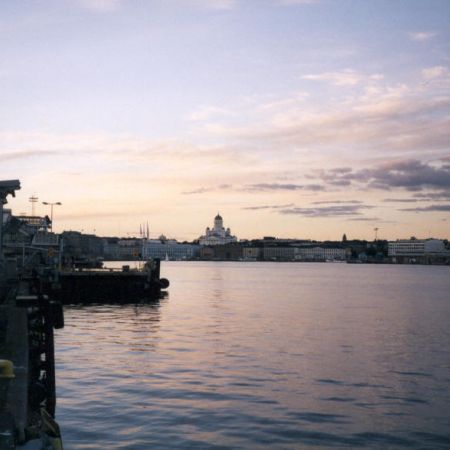
Until the nineteenth century the Finns were like many other peoples of Europe a subject nation seemingly without a culture or a history of their own. The national awakening of the nineteenth century brought recognition of the uniqueness of the Finnish people and their culture and led to Finland's independence in 1917. Complicating the emergence of the Finnish people into national consciousness however was the split between the majority of Finnish speakers and a powerful and influential minority of Swedish speakers. Only during the twentieth century was this conflict gradually resolved.
In 1987 Finland celebrated the seventieth anniversary of its national independence which was a hard-won achievement. Independence was threatened at the start in a bloody civil war in 1918 between Finnish leftists (Reds) and rightists (Whites); a victory by the Reds might have resulted in Finland's eventual absorption by the Soviet Union. One legacy of the war was a longlasting political division between working class Reds and middleclass Whites during the first two decades of independence. As a result political extremism as represented by communism and by fascism was stronger in Finland than it was in many other Western democracies; it was eventually neutralized however and with time Finnish democracy became strongly rooted.
The most serious challenges to Finland's independence came during World War II when the Finns twice faced attack by overwhelming Soviet forces. They fought heroically but were defeated both times and the Soviets were narrowly prevented from occupying and absorbing Finland. Since World War II the Soviet Union's status as a superpower has meant that it could at any time end Finland's existence as a separate state. Recognizing this the Finns have sought and achieved reconciliation with the Soviets and they have tenaciously pursued a policy of neutrality avoiding entanglement in superpower conflicts.
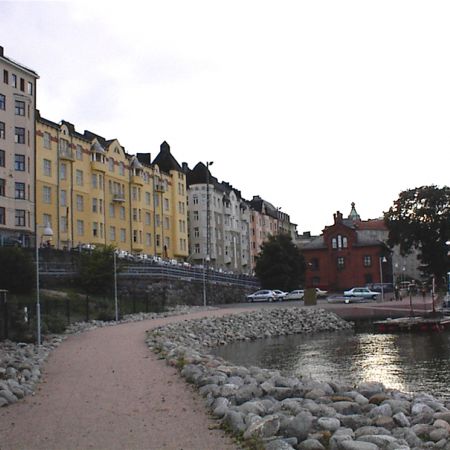
The long era of peace after World War II made possible the blossoming of Finland as a modern industrialized social-welfare democracy. By the 1980s the intense social conflicts of previous decades were largely reconciled and the country's relationships with other nations were apparently stable.
PLACES TO GO
Helnsinki :
Helsinki is often regarded as the economical capital of Scandinavia, with important wordwide businesses, such as Nokia and Laponia Jewellery, having based their headquarters here.
Helsinki is situated on the south coast of Finland facing. The city of Helsinki was initially a small fishing town until 1812 when this was "modernized" under russian rule. Carl Engel - an architecht from Lublin in Germany - was asked to come to Helsinki and re-design it. Great buildings such as the Tuomionkirkko (meaning: State Cathedral) were designed in a mixture of Gothic renaissance and russian orthodox allthough the church today remains Angelic-Lutheran. During WW2 ( after russian occupation - independence given in 1918 ) Helsinki was constantly being bombed by soviet air-planes and several thousand people died.
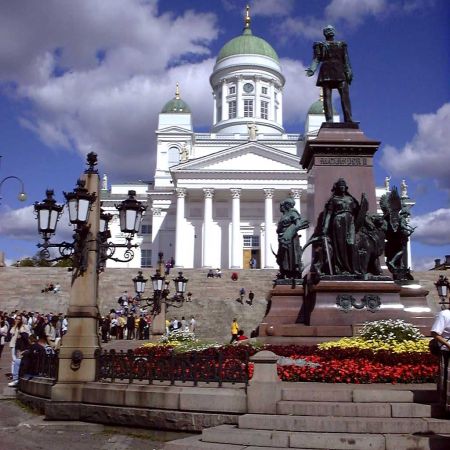
Today, annually, thousands of tourists from USA, Germany, Sweden, Japan, etc. visit the beautiful classical Helsinki. The citys nightlife is pacing and several bars have reached worldwide fame such as The Ice Bar and DTM. The city's activities are shopping, visiting historical monuments such as Suomenlinna. For shopping Stockmann is highly recommended with a wide range of allmost everything ultra-technological can be bought among with authentic finnish soveneirs. Many other good department stores can also be found but dont be suprised if the prices are quite high. There are also several open air markets during the summertime where copious amounts of new and old merchandise can be purchased. Although Helsinki is generally a safe city some areas should be slightly avoided such as outskirts near Espoo and Vantaa should be avoided as crime rate, as in any other capital city, are relatively high when compared to areas surrounding central Helsinki. Drugs such as Cannabis and Cocaine are easily purchased if asked for in clubs and in outskirts although finnish police severely punish any drug offence.
Turku : Turku used to be Finland's capital but lost its position in 1812. After a devastating fire in 1828, it had to rebuilt most of its houses and gradually became the thriving city it is at present. Still considered by many of its inhabitants as the one and only capital of Finland, it's a modern university town (Finland's first university was founded here). This means a lot of restaurants and an exciting nightlife scene.
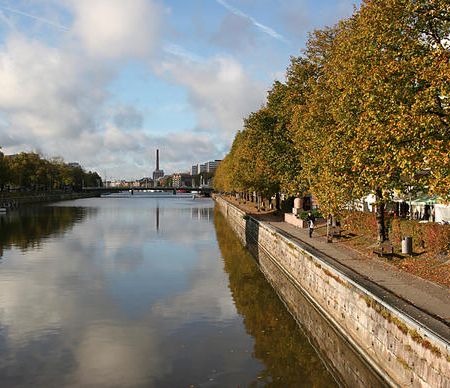
However, Turku is proud of its past and has several museums dedicated to its glamorous and also tragic past. The Turku Castle and Cathedral, dating from the 13th century, are worth a visit. Not in the least because of the Historical Museum that is housed in the former.
Turku is also known as Finland's Christmas Town. This means that every year, for several weeks, Santa rules the city, including all the festivities and events that belong to it. There is even an annual official Christmas Declaration. Due to its location, it's only a short ride to the sea, the small seaside towns and the outstretching fields in between.
Savonlinna : Located in Europe's largest lake district, Savonlinna has around 30,000 inhabitants and was built on three islands joined together by bridges. Besides the scenic natural environment the main attraction is St. Olaf's Castle. This great looking fortress was founded in 1475 by Erik Axelsson Tott. The castle served to repel attacks from the east and to guarantee control of the Savo region for the Swedish Crown. The medieval castle consists of a main castle with three towers and a bailey with an encircling wall reinforced by towers. The castle went through numerous phases of construction, first as a Swedish and from 1743 as a Russian border fortification. It has been among Finland's best-known tourist attractions since the latter 19th century. It houses a restaurant and festival halls. It is also home of the annual Savonlinna Opera Festival, that takes place in July and Savonlinna Ballet Festival every June.
Rovaniemi : The gold fever drew many adventurers to the cold Rovaniemi at the beginning of the 1800s. Not surprisingly, this resulted in an economical growth of Rovaniemi and made it into the capital of the province of Lapland. The city's modern buildings border on the extensive unspoiled Lapland countryside and Artic wilderness. Besides a conference town, Rovaniemi is a thriving university town that offers some good museums in the neighbourhood and some excellent hiking and skiing opportunities.
Because the city was completely destroyed in World War II, and after that completely rebuilt, you won't find many traces of the city's history. A good day-trip is a visit to Ranua (with its zoo) and to the Santa Park that gives you the opportunity to see Santa Claus in person and is especially recommended to those who still don't believe that he truly exist.
Vaasa : After nearly all of the old wooden town burned down in 1852, the town as it is today was built some kilometres from the original spot. The architect Setterberg who designed the city took the fire into account and hence why the city map shows broad avenues and several city sections. The belfry and town hall ruins can still be visited. In 1918, Vaasa was the capital of Finland for a short time. Located nearby the sea, it offers some nice harbour views and eleven museums. There is an enormous amusement park, Wasalandia, for those who feel like looking at the town from a different perspective.
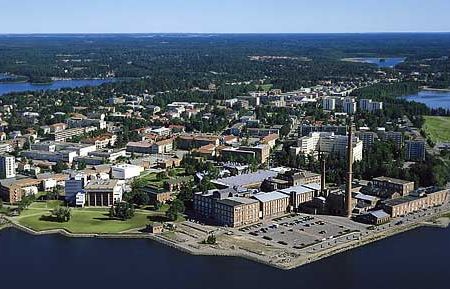
Porvo : These days, Porvoo is a thriving town with a chemical, graphical and electrotechnical industry and at the same time the second oldest city in Finland. It has a well preserved medieval city heart with small streets and red coloured warehouses that stretch out along the riverside. Amongst its museums is the Johan Ludvig Runeberg museum dedicated to Finland's greatest national poet. Located at a 50 kilometres' distance from Helsinki, Porvoo can be easily reached by bus or by boat (during summer time)
Mikkeli : Mikkeli is the place to head for when you want to indulge in Finland's astonishing rural scenery. The town itself has a few museums and lends itself perfectly as a homebase from which to explore the surrounding lakes and hiking tracks. Mikkeli is one of the places featuring one of the many music festivals that are hold in Finland every year. Especially classic music concerts are performed within (or just outside) the city boundaries. Check the papers for this years' events.
Mikkeli is a town with astonishing amount of history as well. It used to be the headquarters of the Finnish army in the second world war. The town is still full of war time buildings, barracks and cannons. The places to go are The Observation Tower, Maunukselankatu, Headquarters Museum.
Tampere : Tampere is the largest inland city of the Nordic countries with a population of over 200 000. The city was founded in 1779 on the banks of the Tammerkoski Rapids (one of Finland´s official national scenic areas) and it evolved into the most highly industrialized locality in Finland during the 19th century. You can still see the Tampella-Finlayson factory area of the 19th century, also pictured in the new Finnish 20-mark bill. Thes old industrial areas have been vitalized and are now full of life and activities. You will find many small restaurants, sport and fitness centres, the Vapriikki museum centre and the Central Museum of Labour.
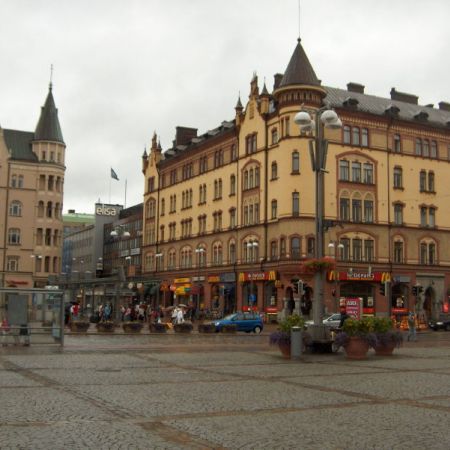
Tampere is also a university city. There are two universities and numerous other institutions of education. Tampere is an important centre of Southern Finland when it comes to employment and education. It is also an outstanding centre for Finnish cultural life with its theatres and events focusing on music, literature, arts and architecture.
Sights include the Central Square, the Pyynikki Ridge, Pispala, the Cathedral, many examples of Pietilas' Architecture, the Pyynikki Observation Tower and the Nasinneula Observation Tower.
Kokkola : Kokkola is a classical small town on the coast of the Gulf of Bothnia. A walking tour in the heart of the town takes you back in history. Many museums wish you welcome to acquaint yourself with their exhibitions.
Tankar, the lighthouse island outside Kokkola invites you to an unforgetable adventure in the Gulf of Bothnia. This islet, risen from the sea, has worked as a base for fishermen and sealhunters for centuries. Even today there are some old cottages left from the very old, idyllic settlement.
